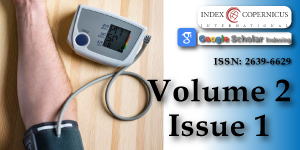What is new in Hypertension of Mexico 2018? -Impact of the new classification of high blood pressure in adults from American College of Cardiology/American Heart Association (ACC/AHA)
Main Article Content
Abstract
The new report of American College of Cardiology/American Heart Association task force on Clinical Practice Guidelines for High Blood Pressure in Adults was published online ahead of print November 13, 2017. The new American recommendation was focused on the criteria to define Hypertension. 130/80 mmHg or more is now considered as the new cut off point to define Hypertension. It is not new if we consider cumulative evidence in the las two decades has been broken the idea to consider 140/90 mmHg as the point to start medical actions. Thus, in México with current ACC/AHA definition it is estimated today around 48 million of adult hypertensive population. In the Mexican Institute of Social Security (IMSS) several strategies has been developed to improve prevention as the key action to confront non communicable chronic disease including hypertension. This updated guideline from ACC/AHA is an extraordinary opportunity to reinforce our preventive programs to high blood pressure control. In this brief report we analyze the epidemiological situation in Mexico and its possible consequences of the new criteria for hypertension diagnosis. The main current strategies that are applied into the IMSS to confront cardiovascular risk factors are directed to prevention. The IMSS is prepared to attend situations as the change of criteria diagnoses in Hypertension and new preventive models are in progression.
Article Details
Copyright (c) 2018 Rosas-Peralta M, et al.

This work is licensed under a Creative Commons Attribution 4.0 International License.
Velázquez Monroy O, Rosas Peralta M, Lara Esqueda A, Pastelín Hernández G, Attie F, et al. Hipertensión Arterial en México: Resultados de la ENSA 2000. Arch Cardiol Mex. 2002; 72: 71-84. Ref.: https://goo.gl/XRK1bT
ENSANUT 2012. Hipertensión arterial en adultos mexicanos: importancia de mejorar el diagnóstico oportuno y el control. Ref.: https://goo.gl/t3rFU1
Encuesta Nacional de Salud y Nutrición de Medio Camino 2016. Ref.: https://goo.gl/LnNtKh
Whelton PK, Carey RM, Aronow WS, Casey DE Jr, Collins KJ, et al. 2017 ACC/AHA/AAPA/ABC/ACPM/AGS/APhA/ASH/ASPC/NMA/PCNA guideline for the prevention, detection, evaluation, and management of high blood pressure in adults: a report of the American College of Cardiology/American Heart Association Task Force on Clinical Practice Guidelines. J Am Coll Cardiol. Hypertension. 2017; 1097: 41519-41521. Ref.: https://goo.gl/iM2eix
Rodríguez-Ramírez M, Simental-Mendía LE, González-Ortiz M, Martínez-Abundis E, Madero A, et al. Prevalence of Prehypertension in Mexico and Its Association with Hypomagnesemia. Am J Hypertension. 2015; 28: 1024-1030. Ref.: https://goo.gl/hyR1zX
Jaffe MG, Young JD. The Kaiser Permanente Northern California story: improving hypertension control from 44% to 90% in 13 years (2000 to 2013). J Clin Hypertens. 2016; 18: 260-261. Ref.: https://goo.gl/KifGHc
Smith SC Jr, Benjamin EJ, Bonow RO, Lynne TB, Mark AC, et al. AHA/ACCF secondary prevention and risk reduction therapy for patients with coronary and other atherosclerotic vascular disease: 2011 update: a guideline from the American Heart Association and American College of Cardiology Foundation. J Am Coll Cardiol. 2011; 58: 2432-2446. Ref.: https://goo.gl/tHwFFo
Standards of Medical Care in Diabetes-2016: Summary of Revisions. Diabetes Care. 2016; 39: 4-5. Ref.: https://goo.gl/xwCdy9
Hysong SJ, Simpson K, Pietz K, SoRelle R, Broussard Smitham K, et al. Financial incentives and physician commitment to guideline-recommended hypertension management. Am J Manag Care. 2012; 18: 378-391. Ref.: https://goo.gl/WN844V
Petersen LA, Simpson K, Pietz K, Urech TH, Hysong SJ, et al. Effects of individual physician-level and practice-level financial incentives on hypertension care: a randomized trial. JAMA. 2013; 310: 1042-1050. Ref.: https://goo.gl/umG3QM
Karunaratne K, Stevens P, Irving J, Hobbs H, Kilbride H, et al. The impact of pay for performance on the control of blood pressure in people with chronic kidney disease stage 3-5. Nephrol Dial Transplant. 2013; 28: 2107-2116. Ref.: https://goo.gl/pobq5C
Maimaris W, Paty J, Perel P, Legido-Quigley H, Balabanova D, et al. The influence of health systems on hypertension awareness, treatment, and control: a systematic literature review. PLoS Med. 2013; 10: 1001490. Ref.: https://goo.gl/cGKqTS
Center for Medicare and Medicaid Services. Million Hearts: Cardiovascular Disease Risk Reduction Model. 2016. Ref.: https://goo.gl/DjFpGm
Walsh JM, McDonald KM, Shojania KG, Sundaram V, Nayak S, et al. Quality improvement strategies for hypertension management: a systematic review. Med Care. 2006; 44: 646-657. Ref.: https://goo.gl/Qm58er
Jaffe MG, Lee GA, Young JD, Sidney S, Go AS. Improved blood pressure control associated with a large-scale hypertension program. JAMA. 2013; 310: 699-705. Ref.: https://goo.gl/Crh8tF
Rosas-Peralta M, Borrayo-Sánchez G, Madrid-Miller A, Ramírez-Arias E, Pérez-Rodríguez G. Hipertensión arterial sistémica en el adulto mayor. Recomendaciones para la práctica clínica. Rev Med Inst Mex Seg Soc. 2016; 54: 75-77. Ref.: https://goo.gl/p761qx
Martín Rosas-Peralta, Silvia Palomo-Piñón, Gabriela Borrayo-Sánchez, Alejandra Madrid-Miller, Eduardo Almeida-Gutiérrez, et al. Consenso de Hipertensión Arterial Sistémica en México. Rev Med Inst Mex Seguro Soc. 2016; 54: 6-51. Ref.: https://goo.gl/Cht2F7
Rosas-Peralta M, Borrayo-Sánchez G, Ramírez-Arias E, Madrid-Miller A, Perez-Rodriguez G. Complicaciones cardiovasculares de la crisis hipertensiva. Rev Med Inst Mex Seguro Soc. 2016; 54: 67-74. Ref.: https://goo.gl/MeyKfx
Rosas-PeraltaM, Medina-Concebida L, Borrayo-Sánchez G, Madrid-Miller A, Ramírez-Arias E, et al. Hipertensión arterial sistémica en el niño y adolescente. Rev Med Inst Mex Seguro Soc. 2016; 54: 52-66. Ref.: https://goo.gl/kFDEv7
Borja Aburto VH, Salud Pública. Salud pública, Ed. Alfil. 1a. Edición. 2013.
CHKT en línea. PREVENIMSS. Ref.: https://goo.gl/WdyHpH
Castañeda-Sánchez O, Ruelas-Oliveros G. Efecto de una intervención educativa en preescolares con factores de riesgo cardiovascular en Ciudad Obregón, Sonora. Aten Fam. 2015; 22: 77-81. Ref.: https://goo.gl/LZnHQJ
ChiquitIMSS, Programa de salud del niño de 5 a 9 años. 2014. Ref.: https://goo.gl/j7zdtB
Peñalvo JL, Santos-Beneit G, Sotos-Prieto M, et al. The SI! Program for Cardiovascular Health Promotion in Early Childhood. JACC. 2015; 66: 1525-1536. Ref.: https://goo.gl/kqVPf7

